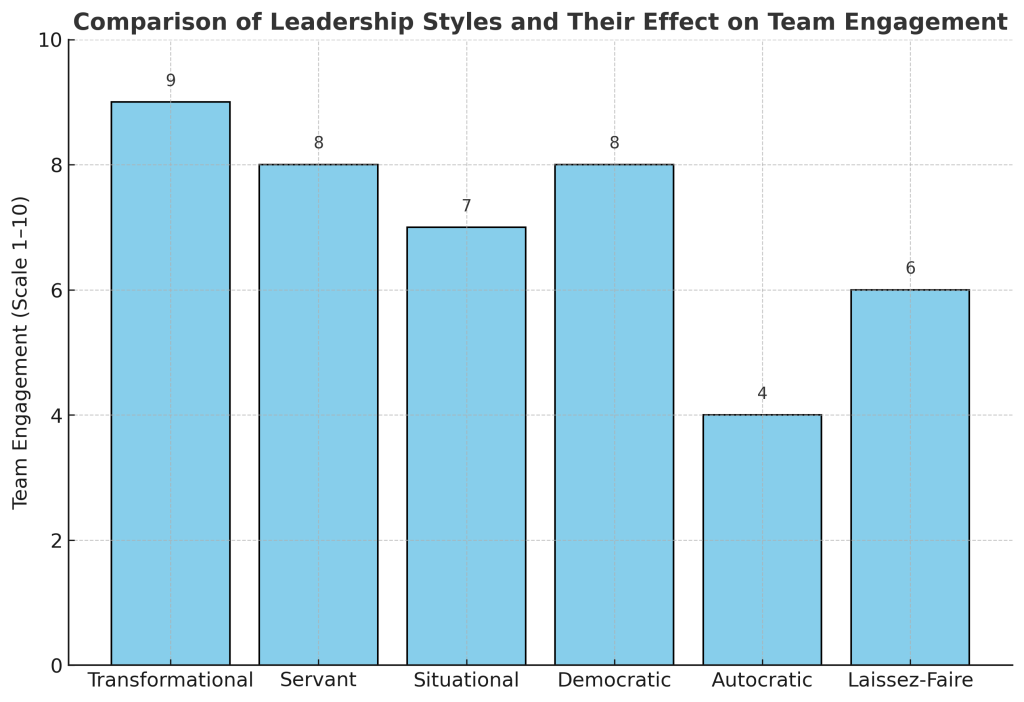
Introduction: When Great People Don’t Make a Great Team
Have you ever been part of a group filled with talented individuals, but where progress felt slow or disjointed? That often comes down to leadership. Having great people is just half the equation; someone needs to bring everyone together, clear the path forward, and maintain the momentum.
In today’s changing workplace, with remote meetings, hybrid schedules, and rapid shifts, team leadership isn’t a bonus. It’s essential. Whether you’re stepping into a leadership role or trying to sharpen your skills, how you lead affects communication, morale, results, and team well-being.
In this post, we will:
- Explore practical leadership models
- Share real-world examples you’ve likely experienced
- Offer actionable tips and clear takeaways
Let’s dig in.
What Is Team Leadership?
Team leadership is about guiding people in a way that helps them do their best work. It’s not about control or commanding; it’s about connection and understanding. A true leader doesn’t just assign tasks. They pay attention to how their team members work, what support they need, and how to help them grow.
When you lead a team, your job is to provide clarity. People need to understand what they’re working toward and how their efforts contribute to the bigger picture. At the same time, good leadership creates space for individuals to develop. This means asking thoughtful questions, encouraging everyone to share their ideas, and offering support without taking over.
Every team faces challenges like stress, change, and occasional conflict. A steady and thoughtful leader can make a big difference during these times, whether it’s calming tension in a meeting or helping a teammate through a difficult period. How you show up matters.
Effective leadership isn’t about being loud or flashy. It’s about being consistent, honest, and caring. It shows in small but meaningful actions: checking in on people without waiting to be asked, giving credit when it’s due, and making sure no one feels isolated.
In short, team leadership is about focusing on people. When you care about how your team works together, not just what they produce, trust builds naturally. And when trust is strong, the quality of work improves — one conversation, one shared goal, one project at a time.
What It Really Means to Lead a Team
Leading a team is more than assigning tasks or checking in on progress. It’s about forging a shared purpose and helping people grow while staying connected. It’s balancing the big picture and the everyday details. Strong team leaders also:
- Build trust and address conflict early
- Adapt to changing needs and environments
- Communicate purpose and listen well
Effective leadership goes beyond authority. It’s about creating space for people to shine.
Essential Team Leadership Skills: Building Trust, Not Just Walls

No matter the model you follow, a leader needs several core abilities:
- Clear communication
Be honest, direct, and open about goals, expectations, and feedback. Invite questions. Listen more than you talk. - Decisiveness
Your team looks to you when choices need to be made. You don’t need all the answers, but you do need to make informed decisions and explain your reasoning.
- Adaptability
Plans rarely go as expected. The best leaders pivot when needed, switch styles based on context, and make room for change. - Emotional intelligence
Notices when someone’s struggling, checks in when things feel off, and uses empathy to guide one-on-one conversations. - Delegation
Let go of control. Assign responsibility, trust people to deliver, and be available for support, not micromanagement.
Leadership Models That Work (and Why They Matter)
These are not just academic frameworks. They reflect real situations you’ve seen or experienced.
Transformational Leadership
You inspire through purpose, not only tasks. People feel driven because they believe in what they are achieving together.
Example: A lead who gathers input on a project roadmap, then empowers team members to own key parts of the plan and grow professionally while hitting big milestones.
Servant Leadership
You prioritize helping others succeed by listening, removing obstacles, and supporting development.
Example: A leader who reorganizes priorities when a team member faces personal stress, then checks in regularly and adjusts expectations.
Situational Leadership
You adapt based on the person or task at hand. Sometimes you guide, sometimes you step back.
Example: A newly hired junior gets close support, while a seasoned pro gets autonomy, and it flows because you matched support to their needs.
Democratic Leadership
You invite ideas, encourage discussion, and build consensus.
Example: In a planning session, you ask everyone to contribute, weigh pros and cons openly, and agree on an approach together.
Autocratic Leadership
Sometimes quick top-down decisions are needed, especially when time is short.
Example: In a crisis, you make a fast call to pause a problem area, then circle back with the team afterward to explain why.
Laissez-Faire Leadership
You give experienced people space to work independently, stepping back while staying informed.
Example: A creative team gets a goal and a deadline, but under minimal supervision. You trust their expertise and only provide input when asked.
How to Become a Better Leader
Becoming a better leader isn’t about memorizing rules or following a strict manual. It starts with awareness, paying attention to how you show up, how your team responds, what’s overlooked, and what patterns keep repeating. Leadership is more about being present than just being in charge.
Listening is key. Make it a habit to ask questions without already knowing the answers. When someone offers you honest, even tough feedback, resist the urge to immediately fix or defend yourself. Just listen fully. That’s the foundation of building trust and one of the most effective team leadership strategies.
People notice how you handle pressure and setbacks. Do you stay calm and steady? Do you take responsibility or point fingers? Your actions in difficult moments speak louder than any motivational poster.
Don’t forget the basics either. A simple “thank you” sincerely goes a long way. Notice when someone hasn’t spoken up in a while. Give people space to grow, but don’t disappear as a leader. Set clear expectations, but always stay approachable and human.
You won’t get everything perfect, and that’s okay. No one does. What matters is that your team sees you’re genuinely present and invested. When they feel that, they’ll follow you wholeheartedly. That’s what true leadership looks like.
Examples of Team Leadership Skills
Being a strong team leader isn’t about holding a title or delivering perfect speeches. It’s reflected in how you handle everyday moments, stay steady during challenges, and make others feel valued. Here are some key skills that help teams work better together:
Active Listening
Give your full attention, ask thoughtful questions, and make sure people feel truly heard.
Clear Communication
Be straightforward about goals, expectations, and what success looks like.
Leading by Action
Stay consistent, own your mistakes, and keep calm when things get stressful.
Supporting Growth
Offer constructive feedback, share helpful resources, and encourage continuous learning.Decisive Thinking
Make well-considered d
Real-World Effective Team Leadership Strategies You Can Use Today

Here are practical habits many successful leaders use daily.
- Regular one-on-one check-ins
Keep them informal, conversational, and supportive. Questions like “How’s life outside work?” create connection. - Own your mistakes
If something goes wrong, admit it. It builds credibility and encourages a culture of accountability. - Celebrate small wins
Been coding tested? Closed a deal? Small successes build momentum and confidence. - Ask more than tell
Say “What’s your take?” or “How would you handle that?” to get team thinking and engaged. - Work alongside your team
Jump into a project when needed. Seeing your willingness to help builds respect and motivation.
Common Challenges and How Leaders Tackle Them
Becoming a leader isn’t always smooth. Here are common friction points and how to address them:
- Managing former peers
Be clear about expectations. Treat everyone fairly. Encourage open communication and avoid favoritism. - Imposter syndrome
Lots of leaders feel out of their depth early on. Keep learning, ask for advice, and permit yourself to grow. - Balancing structure and closeness
Show warmth but maintain standards. You can be approachable while holding people accountable. - Guilt around delegation
Trust your team. Delegation builds skills and ownership, not weakness. Provide guidance, not control.
Actionable Takeaways for Stronger Leadership
Here’s a quick summary of what you can start doing today:
- Choose your leadership model thoughtfully: Match it to the situation, person, and goal.
- Schedule weekly one-on-ones: Use them for support, not status updates.
- Own up to mistakes transparently: Learning starts with vulnerability.
- Celebrate small progress milestones: Keeps energy high.
- Ask open questions more often: Encourage critical thinking and ownership.
- Reflect monthly: What worked, what didn’t? Adjust your style accordingly.
Chart Explanation: Leadership Styles and Team Engagement

When you look at this chart, one thing is clear. Teams feel the most engaged when their leaders inspire them. That’s why transformational leadership hits a 9. People respond when they see purpose and encouragement.
Servant and democratic styles also do well, both at 8. Listening, giving people a say, and creating space for ideas really pay off. Situational leadership sits at 7, which makes sense — it works when leaders adjust to what the team needs at the moment.
Autocratic leadership is way down at 4. Too much control takes the energy out of people. Laissez-faire is at 6. Some freedom is good, but without direction, many employees lose focus.
In short, the more leaders support, involve, and motivate their teams, the stronger the engagement becomes.
Conclusion: Lead with Human Connection
Team leadership isn’t just organizational; it’s relational. It’s your willingness to understand, to guide, and to learn alongside your team. By blending practical frameworks with real-world empathy, you become a leader others want to follow.
Tools like the Melp team collaboration platform can support this approach by streamlining communication, aligning tasks, and helping teams stay truly connected. Because in the end, collaboration and communication will always evolve—but human connection is the constant that makes teams thrive.
Leadership is not about perfection; it’s about being present. When you lead with clarity, humility, and adaptability, you create a space where people do their best work and feel valued while doing it.
Sign Up Today and Lead With Confidence Using Melp
Leading a team isn’t just about giving directions; it’s about inspiring action and building trust.
When you apply the right leadership model, your team becomes more aligned and motivated.
Tools that support real-time collaboration and feedback can make all the difference. Sign up today with Melp and start leading the way your team deserves.